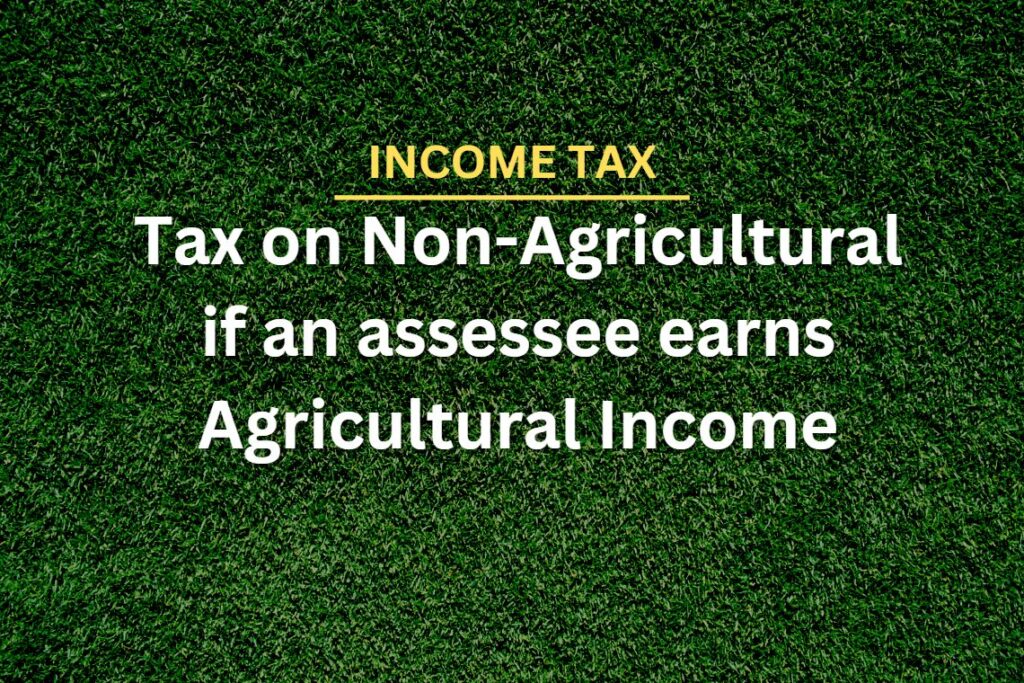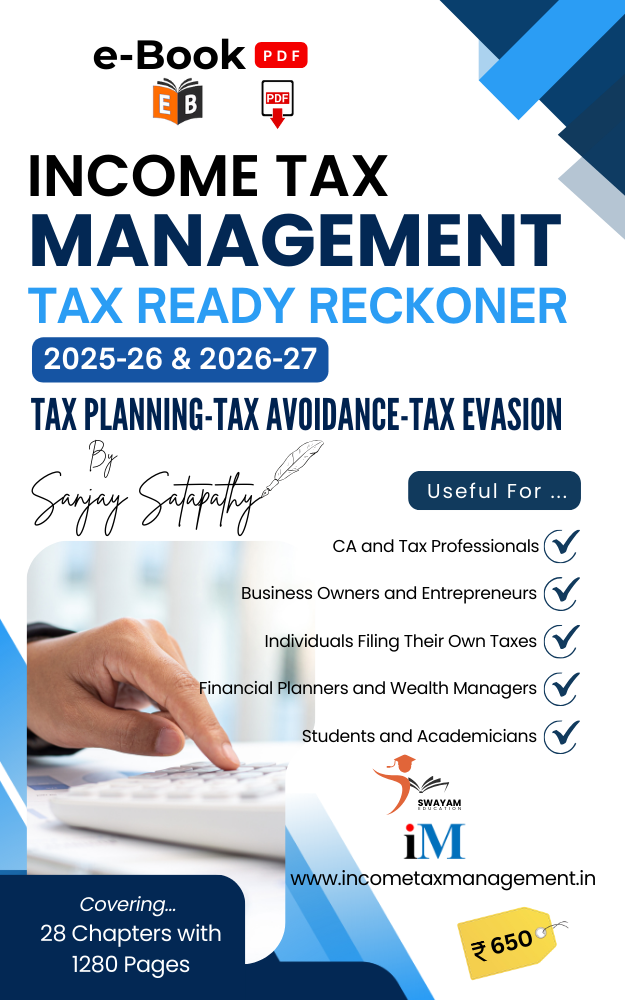Tax on Non-Agricultural Income with partial Agricultural Income
As already discussed, there is no tax on agricultural income but if an assessee has non-agricultural income as well as agricultural income, such agricultural income is included in his Total Income for the purpose of computation of income-tax on non-agricultural income. This is also known as partial integration of agricultural income with non-agricultural income or indirect way of taxing agricultural income.
Such partial integration is done only in the case of:
(i) individual;
(ii) HUF;
(iii) AOP/BOI;
(iv) Artificial juridical person.
It is not done in the case of:
(i) Firm;
(ii) Company;
(iii) Co-Operative Society;
(iv) Local Authority.
The partial integration is done to compute the tax on non-agricultural income only when the following two conditions are satisfied:
(i) Non-agricultural income of the assessee exceeds the maximum exemption limit which is Rs.2,50,000 in the case of an individual (other than individual of the age of 60 years or above) and HUF, etc.; and
(ii) The Net Agricultural Income exceeds Rs.5,000.
| 1. In the case of an individual (whether male or female) who is resident in India and who is of the age of 60 years or more but less than 80 years at any time during the previous year, the maximum exemption limit shall be Rs.3,00,000 instead of Rs.2,50,000 and in case of an individual who is resident in India who is of the age of 80 years or more at any time during the previous year, the maximum exemption limit shall be Rs.5,00,000 instead of Rs.2,50,000.
2. If an individual opts to be taxed under section 115BAC, the exemption limit shall be Rs.2,50,000 whether such individual is less than or more than 60 years old. |
Computation of Tax where there is Agricultural Income also:
The following steps should be followed to calculate the tax:
Step 1: Add agricultural income and non-agricultural income and calculate tax on the aggregate as if such aggregate income is the Total income.
Step 2: Add agricultural income to the maximum exemption limit available in the case of the assessee and compute tax on such amount as if it were the Total Income.
Step 3: Deduct the amount of income-tax as computed under Step 2 from the tax computed under Step 1.
The amount so arrived at shall be total Income-tax payable by the assessee.
Step 4: Claim rebate under section 87A if applicable.
Step 5: Add surcharge if applicable + health and education cess @ 4%.
EXAMPLE :
Gross Total Income of S aged 50 years as computed under Income-tax Act, for the assessment year 2022-23 is Rs.5,20,000. He deposits Rs.20,000 in a PPF account.
(i) Compute the tax payable by S assuming that he has agricultural income of(a) Nil; (b) Rs.5,000; and (c) Rs.3,50,000.
(ii) What will be the tax payable by S in the above case, if he opts to be taxed under section 115BAC.
Solution (i):
(a) and (b) Since the agricultural income is either Nil or does not exceed Rs.5,0000. there will be no partial integration and the Income-tax will be calculated on Rs.5,00,000 (Rs.5,20,000 — Rs.20,000 deduction under section 80C) as usual. Tax on Rs.5,00,000 will be Rs.12,500 — Rs.12,500 (Rebate under section 87A) = Nil.
Solution (ii):
In this case also, there will be no partial integration and the Income-tax will be calculated on Rs.5,20,000 as deduction under section 80C (Chapter VIA) shall not be allowed. Tax on Rs.5,20,000 will be Rs.15,500. Further, rebate under section 87A shall not be allowed as his total income exceeds Rs.5,00,000.
| (i)(c) Step 1: | Rs. | Rs. |
| Aggregate of Agricultural and Non-Agricultural income (Rs.3,50,000 + Rs.5,00,000) | 8,50,000 | |
| Tax on Rs.8,50,0O0 | 82,500 | |
| Step 2 : | ||
| Add: 2,50,000 (Maximum exemption limit) to agricultural income of Rs.3,50,000 | 6,00,000 | |
| Tax on Rs.6,00,000 | 32,500 | |
| Step 3: Deduct Tax under Step 2 from Tax under Step 1 (Rs.82,500 — Rs.32,500) | 50,000 | |
| Therefore, tax on non-agricultural income | 50,000 | |
| Step 4: Less: Rebate under section 87A — | 12,500 | |
| 37,500 | ||
| Step 5: Add: Health and education cess @ 4% | 1,500 | |
| Therefore, total tax payable | 39,000 |
| (ii)(c) Step 1: | Rs. | Rs. |
| Aggregate of Agricultural and Non-Agricultural income (Rs.3,50,000 + Rs.5,20,000) | 8,70,000 | |
| Tax on Rs.8,70,0O0 | 55,500 | |
| Step 2 : | ||
| Add: 2,50,000 (Maximum exemption limit) to agricultural income of Rs.3,50,000 | 6,00,000 | |
| Tax on Rs.6,00,000 | 22,500 | |
| Step 3: Deduct Tax under Step 2 from Tax under Step 1 (Rs.55,000 — Rs.22,500) | 33,000 | |
| Therefore, tax on non-agricultural income | 33,000 | |
| Step 4: Less: Rebate under section 87A — (Nil as the total income exceeds Rs.5,00,000) | NIL | |
| 33,000 | ||
| Step 5: Add: Health and Education Cess @ 4% | 1,320 | |
| Therefore, otal Tax Payable | 34,320 |


![Tax Treatment of Income which is Partly Agricultural and Partly from Business [Rules 7,7A,7B,8]](https://incometaxmanagement.in/wp-content/uploads/2023/10/Tax-Treatment-Partly-Agricultural-and-Partly-from-Business-1024x683.jpg)

![Agricultural Income [Section 2(1A)]](https://incometaxmanagement.in/wp-content/uploads/2023/10/Agricultural-Income-Section-21A-1024x683.jpg)
